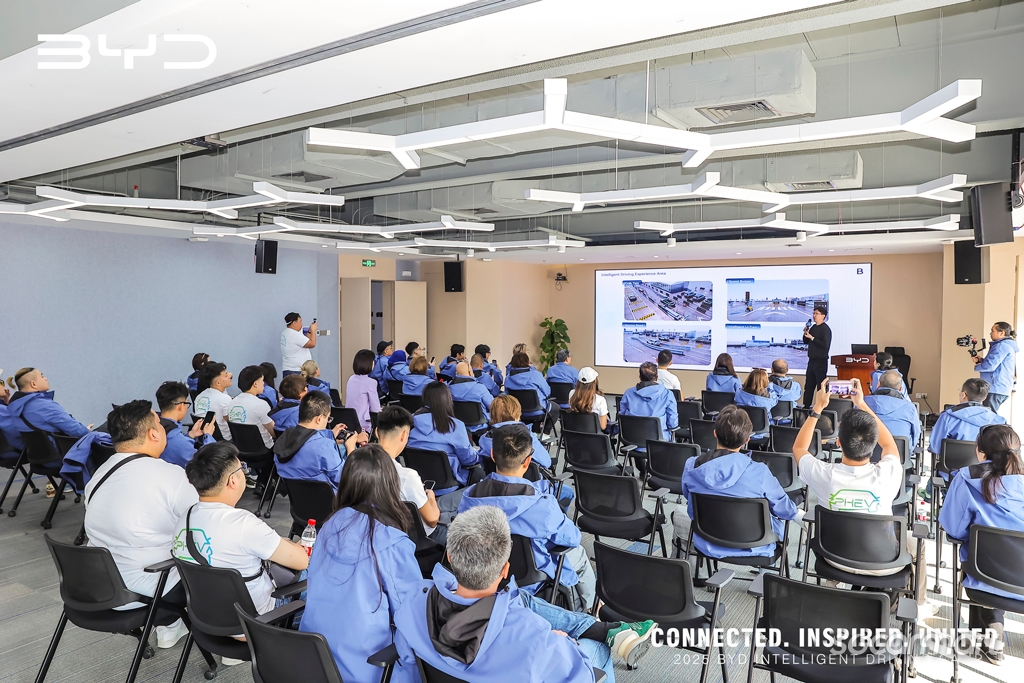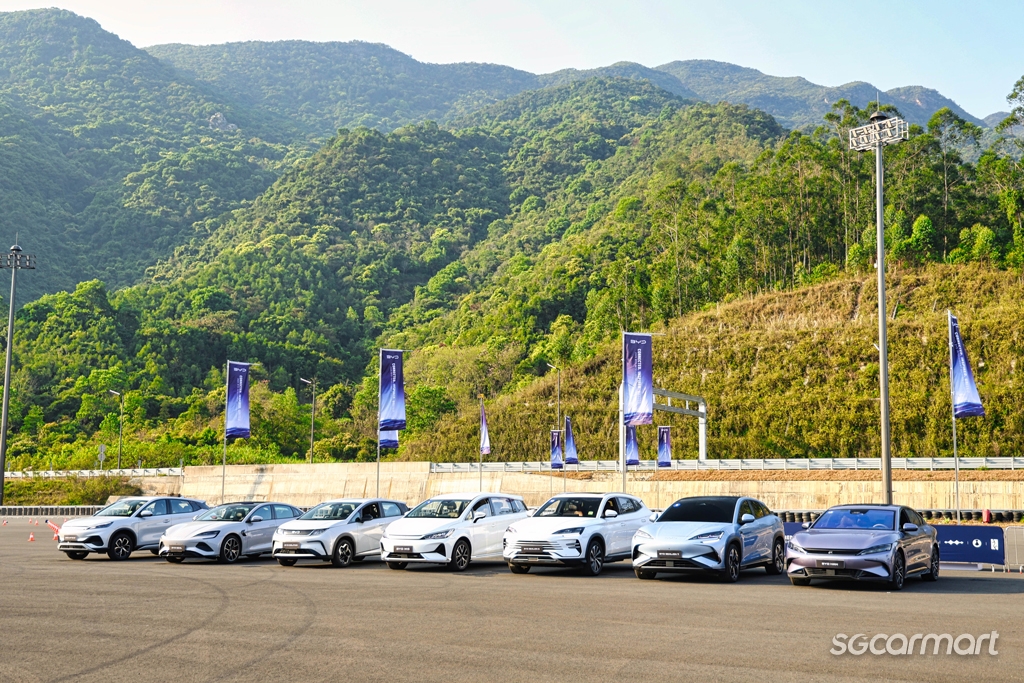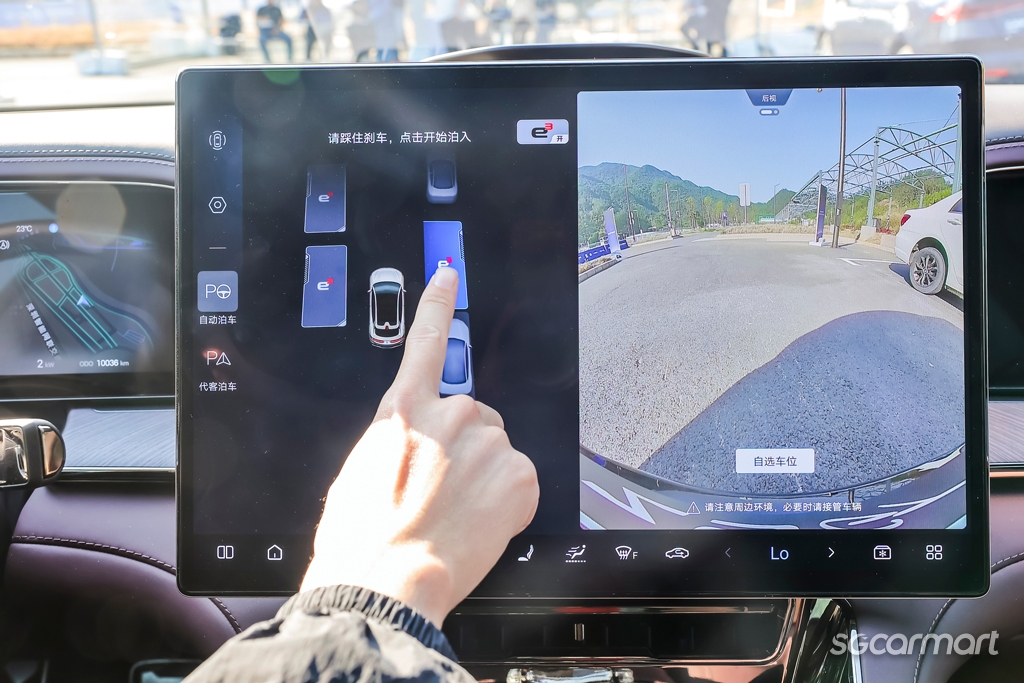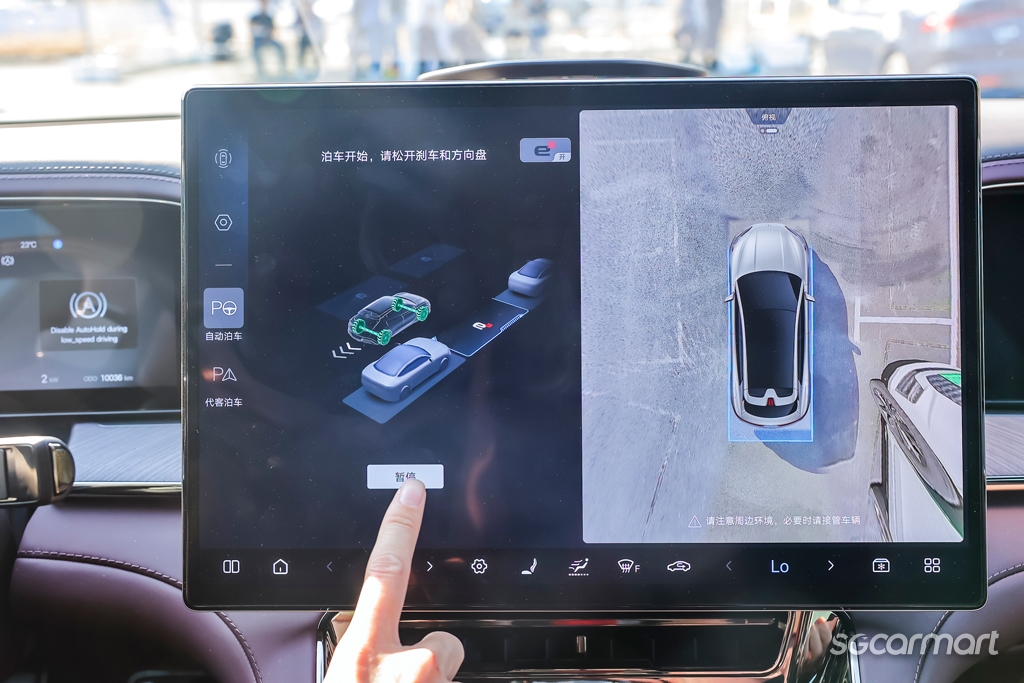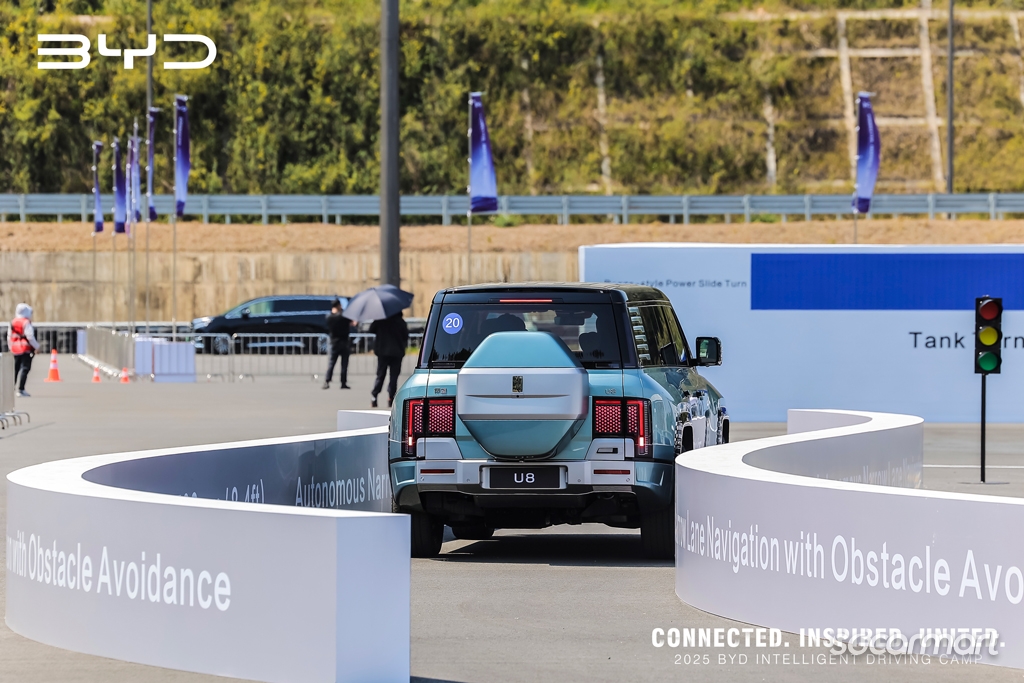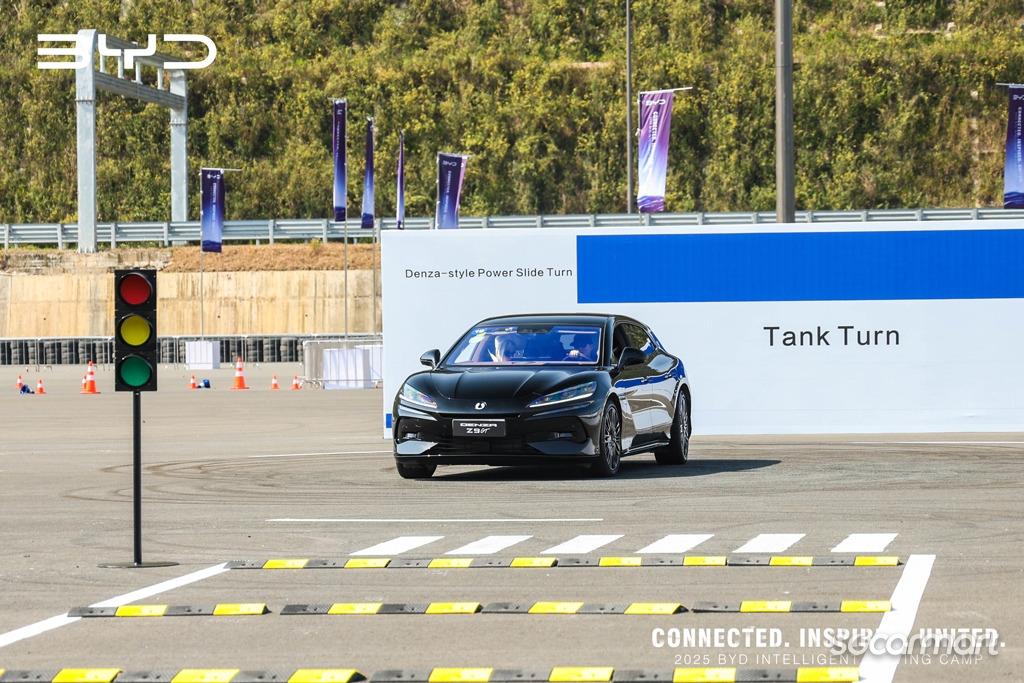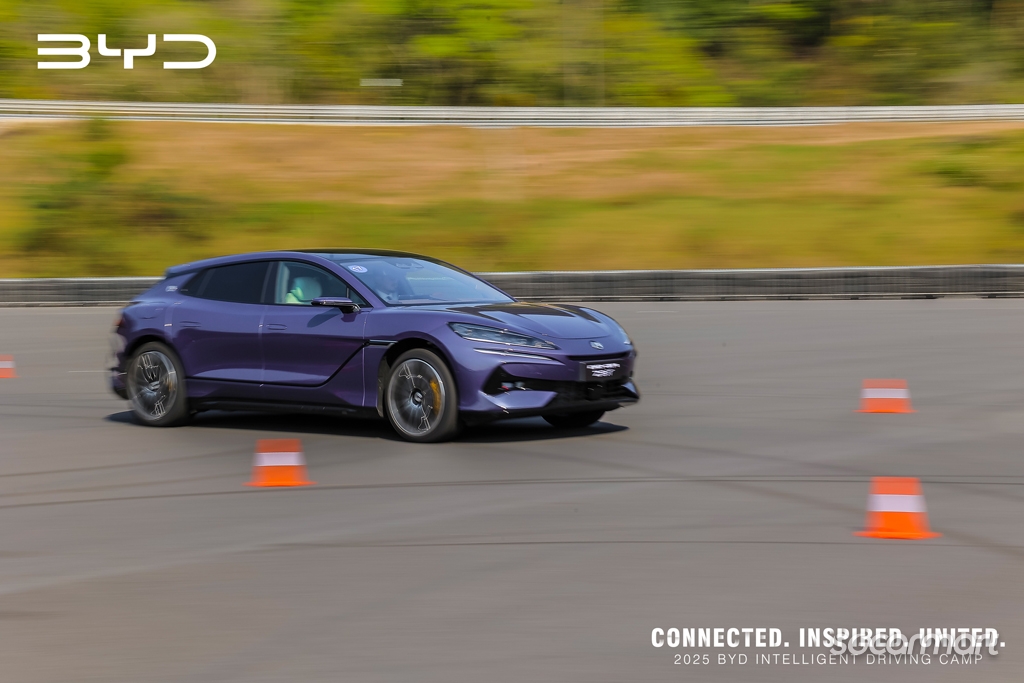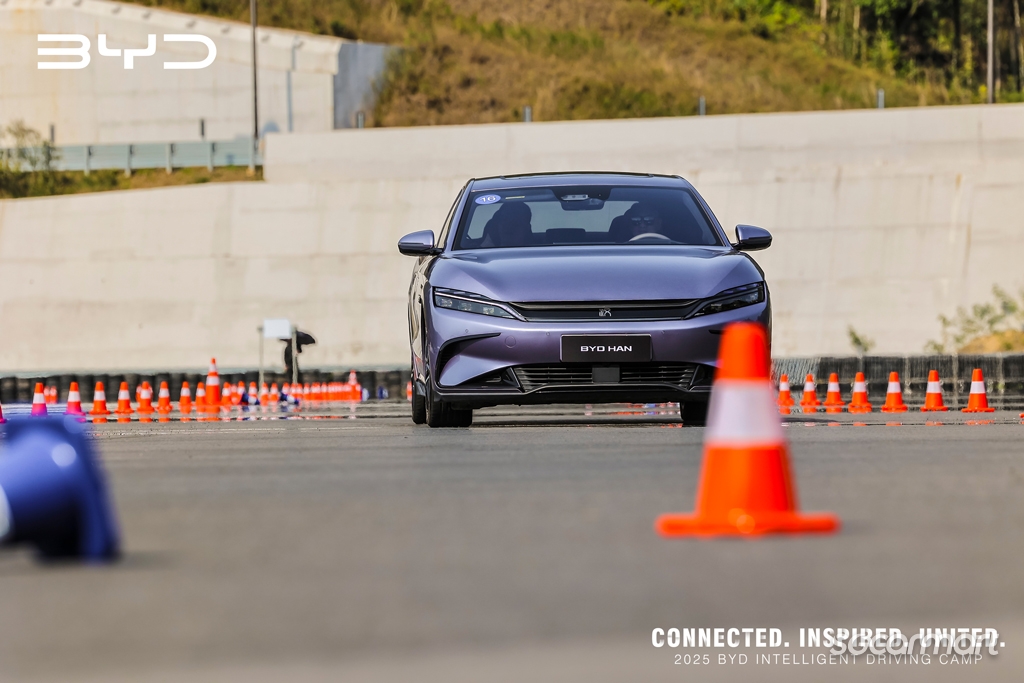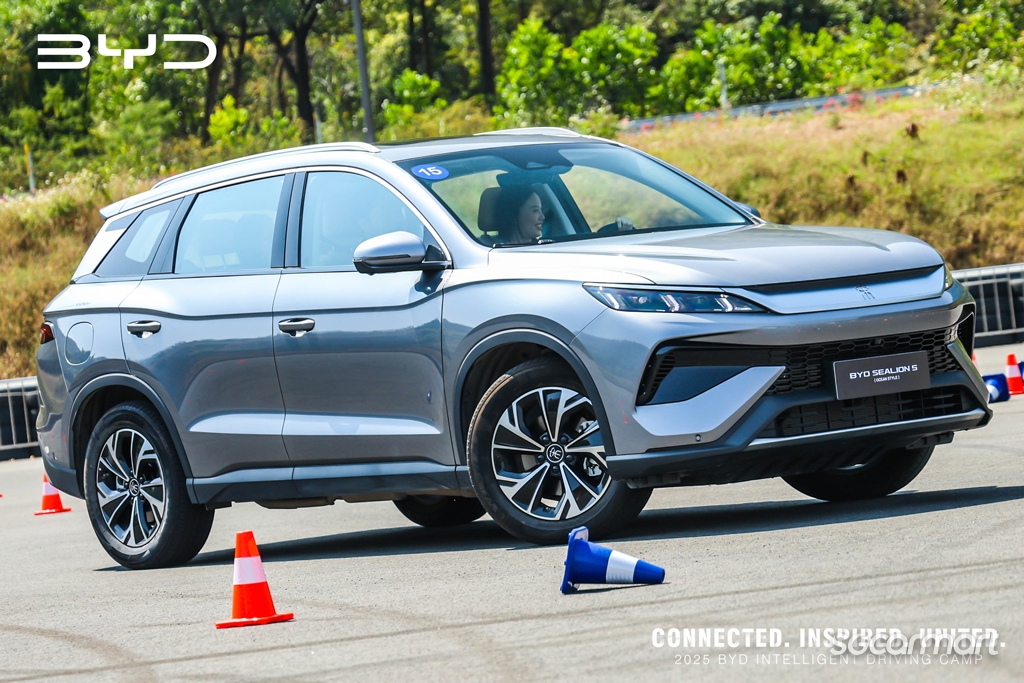Entering the BYD multiverse
07 Apr 2025|3,074 views
How many models do you think BYD has? In Singapore, it sells six passenger models - all EVs. That's a small percentage of its total lineup because when you add the cars from its Denza, Fangchengbao, and Yangwang brands, you're looking at over two dozen models.
Trying out more than 24 cars in a single day is possible but pointless. Confusion will eventually set in, everything will start to feel the same, and one might just pass out from the effort expended.
Nevertheless, I took a deep breath before I could even pronounce the name of the venue: Pingshan Bay Area Intelligent Test Drive Centre, located in Shenzhen, China. On the agenda: Test several of the brand's models and try out some new smart parking functions. Sounds simple, but little did I know that I was about to enter the brand's multiverse.
Instructors gave us an overview of the morning's activities before splitting participants into groups
Heaven-sent
The first activity was trying out God's Eye, a suite of driver assistance features aimed at making life easier for today's harried motorists. God's Eye has other functions such as autonomous emergency braking, but that day, we were shown the various ways it could aid in various parking situations.
Apart from reverse or vertical parking, God's Eye can also do 'fishbone' or diagonal parking. Instructors then utilised a Denza N7 to demonstrate how God's Eye's had the ability to autonomously park a vehicle in a dead end.
We were then shown how to use the BYD app to remotely control and park the car, with app allowing the driver to steer while moving the vehicle forwards or backwards.
God's Eye can also act like a digital valet of sorts. You select the space you want the car to park in, alight, and press the key to complete the process. To someone who's only heard about such features in Chinese cars, seeing them in action was an eye-opener.
Parallel parking is a basic function in the realm of Advanced Driver Assistance Systems (ADAS) today, so BYD raised the stakes. Models like the Z9 GT, which has e3 technology (three electric motors) can 'shimmy' into a parking space when needed. But why is this useful?
Suppose that you're trying to find parking along a narrow street. However, the usual way of parallel parking, where you reverse into the space, is not possible as the front of the car will hit another vehicle or object as you manoeuvre.
The user experience was relatively seamless, for activating the functions mostly required just two taps
With e3 technology, you turn the car into the parallel space, stop, and then conveniently press a button on the infotainment screen to instruct the car to 'shimmy' its rear end into place. God's Eye does this by activating the electric motors to pivot the vehicle as needed.
The Yangwang U8, which has even more advanced e4 technology, was also showcased. With four electric motors, it can perform a 'tank turn'. Tanks can perform 360-degree turns on the spot by braking one set of tracks while spinning the other.
An SUV like the U8 needs room to perform this feat, but it will nevertheless come in handy if you find yourself needing to turn the car around in tight quarters.
The downside is that using this feature increases tyre wear since the wheels spin while the car is stationary. The telltale smell of burnt rubber hung in the air, despite the absence of tyre smoke.
The Yangwang U8 can perform Lane Navigation with Obstacle Avoidance, while the Z9 GT's e3 technology lets it do 'tank turns', too
'Off-road' and 'on-track'
Before I could catch a breather, BYD ushered us to an 'off-road' handling course, featuring metal structures that simulated uneven surfaces, banked roads, and a hill. For this, the brand provided a Shark 6 pickup, along with the Fangchengbao B5 and B8 SUVs.
This portion, however, was less impressive, as the ability to negotiate such obstacles is standard fare for off-roaders. That said, the Bao 8 and Shark 6 I tried had excellent hill-hold functions, as they could stop halfway up the ramp and continue climbing without rolling backwards - not even the slightest bit.
The Z9 GT is over 5.2 metres long, but its rear-wheel steering helps make it feel like a drastically smaller car
'Hill descent control' also kicked in instantly and automatically in both the Bao 8 and Shark 6 as they crested the ramp. There's no sudden surge due to gravity - all you feel is gentle descent, allowing you to smoothly stop the car at the bottom.
With the slow-speed stuff out of the way, it was time for the most exciting part of the programme: The dynamic handling course. For this portion, I tried three models: The Z9 GT, followed by the BYD Han and Sealion 05.
I was blown away by the Z9 GT's stupendous performance. Packing 710kW (952bhp) and over 1,100Nm of torque, the high-performance shooting brake slingshots from zero to 100km/h in 3.4 seconds, an astounding feat for a car weighing over 2.8 tonnes.
The Han doesn't have the Z9 GT's dynamism, but it still acquainted itself relatively well around the circuit
Even more shocking was how the Z9 GT threaded its way through the slalom, followed by a series of corners. Thanks to rear-wheel steering, this large and hefty wagon felt more like a Suzuki Swift, twirling and pivoting with ease.
Amid the rush to jump into the next available vehicle as soon it became available, I forgot to ask whether the Han EV I drove was front-wheel drive or all-wheel drive. Yet despite not feeling as agile as the Z9 GT, this large sedan's movements remained well-controlled, and it didn't feel out of sorts when pressed into tight turns.
With the time winding down, quickly I hopped into the Sealion 5, a compact electric crossover underpinned by BYD's e-Platform 3.0 Evo. It is rumoured to be a potential successor to the carmaker's popular Atto 3 model.
Owing to its body style and higher centre of gravity, the Sealion 5 leaned more than the Han and Z9 GT as it was hustled and its steering felt less communicative, too. Still, no cones were 'murdered' as I tackled the course. It should be fine at slower speeds.
Post-event ponderings
Being hurried from one activity to the next left little time to truly absorb everything BYD was trying to showcase in under four hours. There were other models I hadn't tried (due to a lack of time) and other tech features that I had yet to try.
From what I witnessed, God's Eye's parking functions are useful, but it needs to be further polished, as the system in rivals such as XPeng work smoother and quicker.
But the key takeaway was that BYD wants to 'democratise' these features by eventually making God's Eye standard in as many of its models as possible. Meanwhile, other carmakers may charge a premium or only include such functions in more expensive models.
The Z9 GT was probably the highlight of the morning. Denza's flagship model thrilled with its acceleration and handling, while also impressing with its equipment and refinement. But when it arrives in Singapore, it's likely to remain a halo model to be admired, as few would want an annual road tax bill exceeding $10,000.
There undoubtedly remains much to see, and the past hours were just a small glimpse of what else the carmaker has in store. I had just experienced a portion of the BYD multiverse, and the memory of attempting to do everything everywhere all at once is something I won't soon forget.
These stories may also interest you
How many models do you think BYD has? In Singapore, it sells six passenger models - all EVs. That's a small percentage of its total lineup because when you add the cars from its Denza, Fangchengbao, and Yangwang brands, you're looking at over two dozen models.
Trying out more than 24 cars in a single day is possible but pointless. Confusion will eventually set in, everything will start to feel the same, and one might just pass out from the effort expended.
Nevertheless, I took a deep breath before I could even pronounce the name of the venue: Pingshan Bay Area Intelligent Test Drive Centre, located in Shenzhen, China. On the agenda: Test several of the brand's models and try out some new smart parking functions. Sounds simple, but little did I know that I was about to enter the brand's multiverse.
Instructors gave us an overview of the morning's activities before splitting participants into groups
Heaven-sent
The first activity was trying out God's Eye, a suite of driver assistance features aimed at making life easier for today's harried motorists. God's Eye has other functions such as autonomous emergency braking, but that day, we were shown the various ways it could aid in various parking situations.
Apart from reverse or vertical parking, God's Eye can also do 'fishbone' or diagonal parking. Instructors then utilised a Denza N7 to demonstrate how God's Eye's had the ability to autonomously park a vehicle in a dead end.
We were then shown how to use the BYD app to remotely control and park the car, with app allowing the driver to steer while moving the vehicle forwards or backwards.
God's Eye can also act like a digital valet of sorts. You select the space you want the car to park in, alight, and press the key to complete the process. To someone who's only heard about such features in Chinese cars, seeing them in action was an eye-opener.
Parallel parking is a basic function in the realm of Advanced Driver Assistance Systems (ADAS) today, so BYD raised the stakes. Models like the Z9 GT, which has e3 technology (three electric motors) can 'shimmy' into a parking space when needed. But why is this useful?
Suppose that you're trying to find parking along a narrow street. However, the usual way of parallel parking, where you reverse into the space, is not possible as the front of the car will hit another vehicle or object as you manoeuvre.
The user experience was relatively seamless, for activating the functions mostly required just two taps
With e3 technology, you turn the car into the parallel space, stop, and then conveniently press a button on the infotainment screen to instruct the car to 'shimmy' its rear end into place. God's Eye does this by activating the electric motors to pivot the vehicle as needed.
The Yangwang U8, which has even more advanced e4 technology, was also showcased. With four electric motors, it can perform a 'tank turn'. Tanks can perform 360-degree turns on the spot by braking one set of tracks while spinning the other.
An SUV like the U8 needs room to perform this feat, but it will nevertheless come in handy if you find yourself needing to turn the car around in tight quarters.
The downside is that using this feature increases tyre wear since the wheels spin while the car is stationary. The telltale smell of burnt rubber hung in the air, despite the absence of tyre smoke.
The Yangwang U8 can perform Lane Navigation with Obstacle Avoidance, while the Z9 GT's e3 technology lets it do 'tank turns', too
'Off-road' and 'on-track'
Before I could catch a breather, BYD ushered us to an 'off-road' handling course, featuring metal structures that simulated uneven surfaces, banked roads, and a hill. For this, the brand provided a Shark 6 pickup, along with the Fangchengbao B5 and B8 SUVs.
This portion, however, was less impressive, as the ability to negotiate such obstacles is standard fare for off-roaders. That said, the Bao 8 and Shark 6 I tried had excellent hill-hold functions, as they could stop halfway up the ramp and continue climbing without rolling backwards - not even the slightest bit.
The Z9 GT is over 5.2 metres long, but its rear-wheel steering helps make it feel like a drastically smaller car
'Hill descent control' also kicked in instantly and automatically in both the Bao 8 and Shark 6 as they crested the ramp. There's no sudden surge due to gravity - all you feel is gentle descent, allowing you to smoothly stop the car at the bottom.
With the slow-speed stuff out of the way, it was time for the most exciting part of the programme: The dynamic handling course. For this portion, I tried three models: The Z9 GT, followed by the BYD Han and Sealion 05.
I was blown away by the Z9 GT's stupendous performance. Packing 710kW (952bhp) and over 1,100Nm of torque, the high-performance shooting brake slingshots from zero to 100km/h in 3.4 seconds, an astounding feat for a car weighing over 2.8 tonnes.
The Han doesn't have the Z9 GT's dynamism, but it still acquainted itself relatively well around the circuit
Even more shocking was how the Z9 GT threaded its way through the slalom, followed by a series of corners. Thanks to rear-wheel steering, this large and hefty wagon felt more like a Suzuki Swift, twirling and pivoting with ease.
Amid the rush to jump into the next available vehicle as soon it became available, I forgot to ask whether the Han EV I drove was front-wheel drive or all-wheel drive. Yet despite not feeling as agile as the Z9 GT, this large sedan's movements remained well-controlled, and it didn't feel out of sorts when pressed into tight turns.
With the time winding down, quickly I hopped into the Sealion 5, a compact electric crossover underpinned by BYD's e-Platform 3.0 Evo. It is rumoured to be a potential successor to the carmaker's popular Atto 3 model.
Owing to its body style and higher centre of gravity, the Sealion 5 leaned more than the Han and Z9 GT as it was hustled and its steering felt less communicative, too. Still, no cones were 'murdered' as I tackled the course. It should be fine at slower speeds.
Post-event ponderings
Being hurried from one activity to the next left little time to truly absorb everything BYD was trying to showcase in under four hours. There were other models I hadn't tried (due to a lack of time) and other tech features that I had yet to try.
From what I witnessed, God's Eye's parking functions are useful, but it needs to be further polished, as the system in rivals such as XPeng work smoother and quicker.
But the key takeaway was that BYD wants to 'democratise' these features by eventually making God's Eye standard in as many of its models as possible. Meanwhile, other carmakers may charge a premium or only include such functions in more expensive models.
The Z9 GT was probably the highlight of the morning. Denza's flagship model thrilled with its acceleration and handling, while also impressing with its equipment and refinement. But when it arrives in Singapore, it's likely to remain a halo model to be admired, as few would want an annual road tax bill exceeding $10,000.
There undoubtedly remains much to see, and the past hours were just a small glimpse of what else the carmaker has in store. I had just experienced a portion of the BYD multiverse, and the memory of attempting to do everything everywhere all at once is something I won't soon forget.
These stories may also interest you
Thank You For Your Subscription.


























